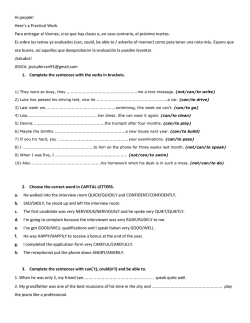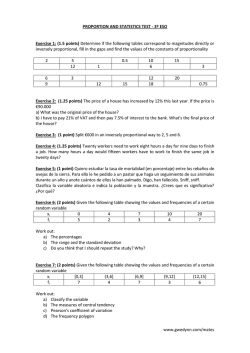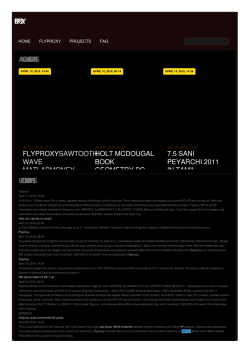
Prohíben a LVBP vetar a Alex Cabrera por dopaje
Prohíben a LVBP vetar a Alex Cabrera por dopaje BJV | Archivo |octubre 5, 2016 Una sentencia de la Corte Primera de lo Contencioso Administrativo falló a favor del beisbolista Alexander Cabrera por considerar que la Liga Venezolana de Beisbol Profesional (LVBP), violó su derecho al trabajo como pelotero. La medida se da a raíz del tercer amparo cautelar, luego de que el mes pasado los Tiburones de La Guaira lo dejaran libre, por motivos estrictamente deportivos. La decisión fue publicada en la página web del Tribunal Supremo de Justicia (TSJ), en la sección de decisiones Contencioso Administrativo. Eduardo Rafael Adrian Kalil, abogado y apoderado de Alex Cabrera, desmiente esta versión, en la solicitud de aclaratoria de una sentencia emitida el 11 de agosto de este año del mismo tribunal, asegurando que “Tiburones de la Guaira B.B.C. le otorgó la libertad de contratación, sin que ninguno de los restantes equipos que conforman la Liga Venezolana de Béisbol Profesional vayan a contratar sus servicios, evidenciándose la conducta subrepticia, concertada y colusiva entre la Liga y sus asociados”, que buscan impedir el ejercicio del derecho al trabajo de Alex Cabrera. Esta no es la primera sentencia a favor de Cabrera ya que el pasado 29 de septiembre, se declaró procedente la solicitud de amparo cautelar interpuesta en cuanto a “prohibir a la Liga Venezolana de Béisbol Profesional y sus asociados, la imposición de cualquier clase de veto que impida el cabal ejercicio del derecho constitucional al trabajo de Alexander Cabrera”. Asimismo impide a la “Liga Venezolana de Béisbol Profesional que de manera directa, encubierta, simulada, subrepticia o interpuesta aplique cualquier actuación o vía de hecho dirigida a evitar que sus asociados obtengan los servicios como jugador de béisbol del ciudadano Alexander Alberto Cabrera o cualquier otra acción que tenga como consecuencia el veto o la restricción total o parcial del ejercicio de su derecho constitucional al trabajo y al deporte”. La Liga Venezolana de Béisbol Profesional ha apelado las decisiones de la corte que han anulado el Capítulo V de su código de ética, por considerar que esto podría afectar o abolir las sanciones que pudieran imponer a los jugadores, personal técnico y los equipos cuando se determine la existencia de una conducta antideportiva. http://www.elimpulso.com/correos-diarios/enterate/prohiben-a-lvbp-vetar-a-alex-cabrerapor-dopaje-5oct TELESUR Noticias > Deportes Papa Francisco exhortó erradicar la corrupción en el deporte El presidente del Comité Olímpico Internacional, Thomas Bach, mostró alegría por coincidir con el sumo pontífice en el amor por el deporte. | Foto: EFE Publicado 5 octubre 2016 (Hace 8 horas 41 minutos) El pontífice pidió proteger al deporte del abuso comercial e instó a los atletas a mantenerse "limpios" y lejos de las adicciones. El papa Francisco instó este miércoles a los líderes del deporte a realizar un mejor trabajo para mantener la corrupción "fuera del campo de juego", durante la ceremonia de apertura de la convención El Deporte al servicio de la Humanidad, en el Vaticano, en Italia. El sumo pontífice dijo que los deportes deben protegerse de las manipulaciones y el abuso comercial, durante su discurso en la primera conferencia global sobre deporte y fe. "Sería muy triste para la humanidad si le gente fuera incapaz de confiar en la veracidad de los resultados deportivos, o si el cinismo y el desencanto ahogaran el entusiasmo o la participación alegre y desinteresada", dijo Francisco. Fuente: Reuters El papa consideró "estériles" las victorias por dopaje en el deporte e instó a los atletas a permanecer "limpios y utilizar el deporte para el desarrollo personal y la solidaridad". El pontífice urgió a los jóvenes a no caer en la atracción de las adicciones. El secretario general de las Naciones Unidas, Ban Ki- moon, y el presidente del Comité Olímpico Internacional, Thomas Bach , fueron los invitados especiales a la ceremonia. El presidente del COI aseguró que el discurso de Francisco fue "inspirador" y agregó que el amor por el deporte es un punto en común, "estamos uniendo fuerzas" para erradicar la corrupción. Igualmente, asistió al evento el ex gran Juventus y ganador de la Copa del Mundo Italia Alessandro Del Piero http://www.telesurtv.net/news/Papa-Francisco-exhorto-a-erradicar-la-corrupcion-en-eldeporte-20161005-0039.html La Voz de Galicia DEPORTES Imagen:POOL | REUTERS La AMA denuncia la existencia de correos falsos enviados por su director Una investigación llevada a cabo por el organismo demuestra que no todos los datos hechos públicos por los piratas informáticos el 13 de septiembre no son exactos MADRID / EFE 06/10/2016 05:00 La Agencia Mundial Antidopaje (AMA) ha denunciado que algunos deportistas usuarios del sistema ADAMS -sistema de localización de deportistas- han recibido correos electrónicos falsos enviados supuestamente por el director ejecutivo de esta y ha asegurado que trabaja para reforzar sus controles de seguridad. En dichos correos el director ejecutivo, Rob Koehler, comunicaba a los destinatarios que el presidente de la Agencia, Craig Reedie, quería hablar con ellos en relación al ataque informático llevado a cabo por el grupo de piratas cibernéticos rusos Fancy Bear, que ha desvelado nombres de deportistas que tienen exenciones de uso terapéutico (TUEs). «Esos correos nunca fueron enviados por el director general ejecutivo. Por favor continúen en alerta ante tales fraudes», ha pedido la AMA en un escrito en el que actualiza algunos datos de la investigación que lleva a cabo sobre el ataque de los piratas informáticos el 13 de septiembre y las medidas de seguridad adoptadas desde entonces. La AMA también ha explicado que esta investigación ha demostrado que no todos los datos hechos públicos por los piratas reflejan con exactitud la documentación recogida en el sistema ADAMS y ha pedido al colectivo de usuarios que comuniquen cualquier inexactitud que se haya publicado sobre ellos. El organismo que preside el británico Craig Reedie ha reforzado desde entonces la seguridad de ADAMS, además de aplicar controles adicionales de autenticidad y hacer una revisión completa sobre la vulnerabilidad de sus controles http://www.lavozdegalicia.es/noticia/deportes/2016/10/06/ama-denuncia-existencia-correosfalsos-enviados-director/0003_201610G6P46991.htm WADA October 5, 2016 Cyber Security Update: WADA’s Incident Response As has been reported in the media, since 13 September the cyber espionage group “Fancy Bear” has been releasing batches of confidential athlete data regarding Therapeutic Use Exemptions (TUEs) on its website. The TUE process is a means by which an athlete can obtain approval to use a prescribed prohibited substance or method for the treatment of a legitimate medical condition. The TUE program is a rigorous and necessary part of elite sport, which has overwhelming acceptance from athletes, physicians and all anti-doping stakeholders worldwide. The criminal activity undertaken by the cyber espionage group, which seeks to undermine the TUE program and the work of WADA and its partners in the protection of clean sport, is a cheap shot at innocent athletes whose personal data has been exposed. Fancy Bear illegally obtained the data from an account in WADA’s Anti-Doping Administration and Management System (ADAMS) created especially for the Rio 2016 Olympic Games (Rio 2016 ADAMS Account); and, therefore, has access to the TUE history of athletes that participated in the Games. The broader ADAMS was not compromised in the attack. Upon learning of the incident, WADA promptly formed a multi-disciplinary incident response team, comprised of internal and external resources, including representatives of its IT, legal, and communications teams. The Agency also started to liaise with leading law enforcement agencies in Canada and elsewhere on all aspects of this investigation, including decisions on taking down information from the Fancy Bear website and other social media sites. In the interest of keeping stakeholders apprised of its handling of the matter, WADA has prepared the following Summary, which includes an overview of the incident and outlines actions that the Agency has taken to date to contain the breach. It should be noted that WADA’s investigation is ongoing; and so, while the Agency wishes to keep stakeholders informed, it is mindful of the risks of disclosing information that might compromise the integrity of its investigation. Summary In June 2016, WADA created the Rio 2016 ADAMS Account to hold Olympic athlete information required to fulfill the doping control program at the 2016 Olympic Games. Following its creation, the International Olympic Committee (IOC) had full administrative authority over this Account. As administrator of the Account, the IOC created Account credentials for those responsible for running the anti-doping program during the Games, including establishing two accounts for WADA representatives, who were part of WADA’s Independent Observer (“IO”) program for the 2016 Olympic Games. Before and during the 2016 Games, third party hackers targeted a number of WADA and IOC email accounts for an email spear phishing attack; which, potentially led to the compromise of certain ADAMS passwords. Note: A phishing email aims to trick the recipient into divulging information, such as their username and password, to gain access to an application of interest. WADA’s technical and forensic team’s current assessment is that an intruder illegally accessed the Rio 2016 ADAMS Account multiple times between 25 August 2016 and 12 September 2016, using credentials unlawfully obtained from one of these targeted users. On 13 September, the intruder, calling itself “Fancy Bear,” released the first batch of data, comprising TUE information, on its website. The intruder has since released data related to current and expired TUEs on five other occasions – always in relation to athletes who competed at the 2016 Olympic Games. The released data all corresponds to the data thefts that occurred between 25 August and 12 September as described above. Upon learning of the intrusion into the ADAMS system on 13 September, WADA began taking additional actions that same day to secure the system and contain the known impact of the attack, including: o deactivation of all Rio 2016 ADAMS accounts; o disabling the self-service “forgot password” reset feature; o increasing logging capabilities related to security events; o increased monitoring of logs and network activity; and o deactivation of dormant accounts. WADA also promptly engaged FireEye Inc., d/b/a Mandiant, a premier security and forensic consulting firm, to conduct a thorough and comprehensive investigation of WADA’s assets, networks, and systems, including ADAMS, to determine the scope of the intrusion and access to data stored on such systems, and to contain any ongoing threat. As of 5 October, Mandiant’s analysis is over 90% complete, and it has not found any evidence of additional compromise to ADAMS data beyond the export of the Rio 2016 ADAMS Account data through 12 September, as described above. In addition to broad stakeholder and media communications immediately after each leak, WADA has contacted, and will continue to contact as necessary, all athletes impacted and their Anti-Doping Organizations (ADOs) – both International Federations (IFs) and National Anti-Doping Organizations (NADOs) – so that they can provide them with the necessary support. Additionally, WADA has advised all ADAMS users to vigilantly monitor their electronic communications and remain alert for attempted phishing schemes. In this regard, WADA was informed last week that some users have received suspicious emails, purportedly from WADA’s Deputy Director General, Rob Koehler, advising them that WADA’s President wanted to speak with them regarding the cyber-attacks. To be clear, no such email was ever sent by the Deputy Director General. Please remain vigilant to such scams. It should also be noted that in the course of its investigation, WADA has determined that not all data released by Fancy Bear (in its PDF documents) accurately reflects ADAMS data. However, we are continuing to examine the extent of this as a priority and we would encourage any affected parties to contact WADA should they become aware of any inaccuracies in the data that has been released. In terms of longer term actions that WADA is taking to further enhance ADAMS security, in addition to implementing additional authentication controls, the Agency is enhancing its security logging and monitoring program; and, will complete a full assessment to enhance vulnerability and security controls. The Agency will also provide more guidance to users regarding how they can prevent the inadvertent communication of passwords to third parties who use spearfishing techniques. WADA thanks athletes and ADOs for their understanding and support. Should they have any questions or concerns; or, have encountered suspicious activity in relation to ADAMS such as phishing emails, they are encouraged to contact the Agency’s helpdesk at [email protected] or on +1 514 904 8800. WADA is taking this situation, concerning athlete privacy, very seriously and will continue to provide relevant updates as circumstances evolve. https://www.wada-ama.org/en/media/news/2016-10/cyber-security-update-wadas-incidentresponse AP Athletes representative says anti-doping system 'not broken' By STEPHEN WILSON Oct. 5, 2016 11:56 AM EDT FILE This is a Thursday, May 12, 2016 file photo of Canadian Olympian Beckie Scott as she speaks to... Read more LONDON (AP) — The head of WADA's athlete commission contends the global anti-doping system is not "broken" and laments that politics surrounding the Russian doping scandal has sown "discord" in the fight against performance-enhancing drugs. Beckie Scott, who chairs the World Anti-Doping Agency athlete committee, urged all sides on Wednesday to put aside their differences and work together to combat "an undeniable threat to the integrity of sport today." In an op-ed released by the Montreal-based agency, the former Olympic cross-country skier from Canada noted that WADA "has come under intense criticism and scrutiny" in the wake of the allegations of state-backed doping in Russia. "'Why?" Scott said. "For successfully fulfilling their mandate and taking the necessary decisions." "To be clear, 'the system' is not broken," she added. "If it were, the exposure of systematic and statecontrolled doping in Russia by WADA would never have happened." Several IOC members have blasted WADA, accusing the agency of failing to act sooner on the Russian doping problems. They also criticized WADA for releasing investigator Richard McLaren's report on systematic Russian doping just weeks before the Olympics in Rio de Janeiro. McLaren's report led WADA to call for the exclusion of the entire Russian team from the Rio Games. The IOC rejected the recommendation, instead asking individual sports federations to determine which Russian athletes could compete. "It is unacceptable that when it comes to clean, fair sport, there is a sense of discord when there should be harmony," Scott said. "Almost every day someone new from the Olympic family takes to the media with the critical claim that the global anti-doping 'system is broken.'" International Olympic Committee members Juan Antonio Samaranch Jr., Sergei Bubka and Gerardo Werthein have all issued highly critical assessments of WADA in recent weeks. "The issue has become so deeply divisive and conflicted among stakeholders that it seems athletes have another competitor in the ring — politics," Scott said. "Cynicism alone will not win the fight." Scott's comments were released three days before an Olympic summit in Lausanne, Switzerland, that the IOC says will focus on developing "a more robust, more efficient and more independent" worldwide anti-doping system. IOC President Thomas Bach has called for the entire testing system to be independent from sports organizations. "We have to be solution focused and can no longer afford to become subject to the politics, conflicted interests and game-playing that has held us back for so long," Scott said. With WADA's future role and status under scrutiny, Scott said the agency should be given the autonomy to effectively monitor compliance with global anti-doping rules, apply sanctions and serve as the "regulatory body" for anti-doping efforts around the world. Scott also said WADA needs better funding. The agency's annual budget, covered 50-50 by the Olympic movement and national governments, is about $27 million. "We need to ask ourselves, what is the cost?" she wrote. "What price are we willing to pay for clean, legitimate sport? We must find new ways of funding the quest for a level playing field." Scott originally finished third in the 5-kilometer pursuit at the 2002 Salt Lake City Olympics, but was eventually bumped up to the gold medal after the two other medalists were caught for doping. http://bigstory.ap.org/article/da2f43c522d54909a80cacb800567d21/athletes-representativesays-anti-doping-system-not-broken The rules of the game: Tackling Doping Seriously Photo: Richard Masoner/Flickr 27.09.2016 Comment by Antoine Duval , Senior Researcher, ASSER Institute In this comment, Antoine Duval from the Asser Institute lays out a set of key orientations for a comprehensive reform of the world anti-doping system in the wake of the Russian doping scandal. In a nutshell, it’s time to focus WADA’s resources on compliance with the World Anti-Doping Code. The Russian doping scandal has undoubtedly broken the scant trust athletes may have had in the fair working of the World Anti-Doping System. Depending on where an athlete trains or competes, he or she will not be treated in a similar manner by anti-doping authorities because local factors and interests will come into play. These divergences must be addressed urgently. There is no need to throw out the baby with the bathwater, however. The World Anti-Doping Agency (WADA) should stay in place, but it must change in order to do so. If not, the whole anti-doping edifice built around it threatens to unravel. Some might favour a permissive doping environment, but a majority still fears for the health of athletes and their equality on the playing field. To this end, this comment suggests five, relatively broad, directions for a reform of WADA’s anti-doping system and a number of concrete policy proposals. Compliance, Compliance, Compliance WADA’s failure, reflected in the Russian doping scandal, is mainly on the compliance front. WADA has devised a set of uniform anti-doping rules, the World Anti-Doping Code (WADC) and its adjacent Standards, applying (in theory at least) across the world. Yet, until recently, it lacked the means (and maybe the willingness) to properly check whether the WADC signatories also properly implemented those rules and standards. This was (and still is) a massive blind spot in the World Anti-Doping System, one that jeopardizes the whole ambition to develop common rules and practices to regulate doping at a global level. From now on, WADA’s focus should be primarily on ensuring compliance with the WADC. In this regard, it is suggested that: WADA allocates a substantial share of its budget to compliance activities; WADA recruits a solid in-house team of specialised investigators;[1] WADA commits to a yearly report on compliance for each individual signatory; Based on this report WADA should order a reasonable number of comprehensive audits of non-compliant organisations. ‘Putting your money where your mouth is’ If it is to be more than a ‘Paper Tiger’, WADA needs to be properly funded, in particular to match the scope of its massive compliance tasks. This necessity has been very much emphasised in the recommendations of the McLaren Report and in recent discussions. The paralysing question is then, who is supposed to pay for this? Everybody seems to agree that more resources are needed to properly run the World Anti-Doping System, but nobody is willing to pay for this. In fact, the answer is not straightforward as it is extremely difficult to have a proper overview of who (Sports Governing Bodies (SGBs) or national States) is currently financing what in the world anti-doping system. Undoubtedly, the International Olympic Committee (IOC) and the States share equally the burden of financing WADA, but it is way less clear on whose shoulders the financial burden for national anti-doping testing predominantly lies. More research will be needed to allocate fairly the financial effort linked to the needed reforms. With this in mind it is proposed that: The States and the IOC commit to doubling their contributions to WADA’s budget; The SGBs commit to financing 50% of the costs incurred by National Anti-Doping Agencies (NADOs) and laboratories for collecting and analysing samples; WADA and UNESCO order a joint report on the financing of world anti-doping system. Transparency and responsiveness Sports governance in general is plagued with a regrettable transparency and accountability deficit and WADA is not immune to it. Leaks should not be the main information source on doping for the general public, instead WADA must be a beacon of transparency and provide a well-structured and accessible database/clearinghouse where all the key information (decisions, compliance reports etc.) on the World Anti-Doping System can be found. Moreover, WADA needs to ensure that executive members abide by personal standards of independence and impartiality and are reflective of the broader set of affected actors. WADA should for example: publish all individual compliance reports/audits on a yearly basis; publish all anti-doping decisions at national and international level in a publicly available repository; commit to systematically publish scientific reports even when they are not amenable to WADA;[2] ensure that noncompliance decisions are taken by a fully independent body; ensure a greater voting power inside its executive bodies for the main affected party: the athletes. Anti-doping is a team sport The anti-doping fight should be less of a top-down exercise and more of a bottom-up collaboration. If the Russian scandal has proven one thing, it is that the press and whistleblowers are often more potent in uncovering systematic doping than WADA, NADOs and the SGBs. This should lead WADA to devise a leniency system providing true incentives for whistle-blowers to come forward. In this regard, the treatment of Ms. Stepanova by the IOC, which refused for the wrong reasons to let her participate in the Rio Games, is disgraceful and counter-productive. Instead, a proper leniency programme would: provide whistle-blowers with attractive incentives (e.g. monetary rewards, relocation funds); ensure that whistle-blowers can continue to exercise their sport professionally outside of their national context; provide adequate protections to whistle-blowers (anonymity, migration support, psychological support). Transnationalise the anti-doping process? Finally, one key element that facilitated the Russian doping system is that the World AntiDoping System takes a very different reality in each national jurisdiction. This is so because the key organisations in charge of the implementation of the WADC are the NADOs and in some countries local laboratories.[3] To address this problem, one would need to centralise and transnationalise the testing process and the analysis of samples. [4] This would imply that WADA (or regional peers) would take over a huge amount of the work currently done by national bodies. This goal is probably worthy of consideration in the medium/long term, yet in the near future it is extremely unlikely that both the States and the SGBs would be ready to confer the necessary means to WADA (or a number of regional equivalents) to become the sole transnational enforcer(s) of the WADC. WADA and the World Anti-Doping System are at a crossroad. The Russian doping scandal has exposed the systematic weaknesses of this global regulatory regime. While it is not realist for WADA to be able to fully control the entire anti-doping process, from the test to the sanction, it should be WADA’s aim to warrantee a floor of common standards and shared practices. I believe that the reforms and orientations proposed in this piece are a feasible step in that direction, one that does not ignore the inherent difficulties of regulating uniformly anti-doping in an extremely complex transnational legal and political environment. This text is an abbreviated (and updated) version of an ASSER Policy Brief (available in full here) published on 1 September. The brief analysed the failures of the World Anti-Doping System unveiled by the Russian Doping Scandal and offered five broad directions and numerous concrete proposals to reform the World Anti-Doping System. Since then, public debates have raged over the future of the World Anti-Doping Agency (see here, here and here) and a recent ‘multistakeholder think tank’ has put concrete (and similar) reforms on the table. This version focuses on (and refines) the five reform orientations and the concrete proposals advanced in the Brief. References: [1] This would imply a substantial boost of WADA’s human resources, as a reminder in 2015 (latest annual report available) WADA had only 81 employees (up from 78 in 2014). [2] WADA allegedly tried to block the publication of the controversial research results it had funded in 2013, see New York Times, Antidoping Agency Delays Publication of Research, 22 August 2013. [3] WADA’s latest Anti-Doping Testing Figures Report indicates that in 2014 NADOs conducted 66% of the tests and IFs only 14%. The share of NADOs is even higher if one considers only the more costly (and efficient) out-of-competition tests. [4] In essence this is what the Olympic Summit aimed at in June 2016, when it requested: “[…]to make the entire anti-doping system independent from sports organisations.” Declaration of the Olympic Summit, 21 June 2016. A similar call was issued on 30 August 2016 by 17 NADO at a special summit in Copenhagen. http://playthegame.org/news/comments/2016/038_the-rules-of-the-game-tackling-dopingseriously/ weetjij.com Do You Know The History of Anabolic Steroids? Category: Health and Fitness Deep Majumdar talk-page There is nothing new about the widespread use of anabolic agents among bodybuilders. But did you know that steroids are being used in every other sport you can think of. They are easily accessible and rather affordable. In a world like ours where people possessing the “whatever it takes’ mindset can go to any limits to emerge victorious in any form of competition, it is not hard to believe that steroids are a part of the regimen of many known athletes. Many a few think that incorporation of PEDs is a recent phenomenon. However, this holds to be not true. The origin of this miraculous compound can be deemed as early as late 1880s. It is just that the popularity of PEDs has recently risen to immense heights due to scandals and doping test failures, while the truth is that they have been in the business for a very very long time. Introduction to Steroids To the layman who has no idea of what a steroid is let’s just say they are chemically synthesized compounds which fall into the category of pharmaceuticals. You see there are two distinct types of steroids, Corticosteroids and Anabolic steroids. Corticosteroids are primarily antiinflammatory substances prescribed by doctors to reduce inflammation whereas anabolic steroids are a completely different class of drugs used for the purpose of building and retaining lean muscle mass. Although both the types are prescription drugs, anabolic steroids have found their place in the sports and athletics community and are used by athletes extensively across the world. Inception of Anabolic Steroids The onset of anabolic steroids can be traced back in the 1950s when Dr John Ziegler in association with Ciba pharmaceuticals, introduced the steroid that proved to be a game changer, methandrostenolone, aka, Dianabol. Since then the popularity of steroids has been no less than a forest fire. And there’s no stopping it. Not anytime soon I suppose. Steroids are on a high and it seems that they’ll be this way for a long time. Since the inception of Dianabol, steroids have developed in nature, strength and magnitude. There are over 32 types of steroids each with unique properties of their own. However, the experimentation on anabolics, can be tracked even as early as 1889 when 72-year-old Charles Edouard Brown began experimentation on testicular serum. In his experiments, he used, first, blood in the testicular vein, second, semen, and thirdly, fluids extracted from testicles of a dog. His experiment consisted of a 3-week long self-administration of subcutaneous injections. The results were a significant improvement is physical and mental energy. This experiment would, later on, go to become the foundation of modern endocrinology. This laid down the path of discovery of synthesized testosterone by a certain German biochemist Adolf Butenandt in 1930. Pharmaceutical giants at that time saw the potential and jumped on the bandwagon. Organon, Schering and Ciba, which were major pharmaceutical firms, put full throttle into producing synthetic testosterone on a commercial level. In 1935, Ciba and Schering shared a Nobel Prize in Chemistry for their work on anabolic androgenic steroids (Adolf Butenandt and G. Hanisch of Schering, and Alfred Wettstein of Ciba. ) Pharmaceutical companies soon saw the opportunity and rushed in. Steroids like Durabolin and Deca Durabolin, and Anadrol and Masteron by Organon and Syntex, respectively, hit the shelves and created a place in history along with Ciba’s Dianabol. Recognition in Sports After Dianabol came in the market, the athletics scenario changed. Athletes were able to reach greater heights and push themselves to the absolute limit. It didn’t take athletes all around the world to reckon the true strength of such a drug. Some, on the other hand, were essentially used as veterinary grade pharmaceuticals whereas some were used to cure certain ailments. Compounds like Trenbolone Acetate and Boldenone Undecylenate were used to increase the muscle mass of cattle for more beef whereas compounds such as Oxandrolone and Nandrolone Decanoate were originally used for curing diseases like osteoporosis, a skeletal muscle wasting disease and Turner disease syndrome, a deformity wherein the affected experiences swelling in the hands and feet (lymphedema), and extra skin on neck. Banned from Sports Soon after the widespread use of steroids began, various sports authorities started taking notice. Who wouldn’t? Marathon sprinters were shoulder pressing as much as weightlifters. That’s something to take into consideration. Several studies were conducted. But the initial studies suggested that anabolic steroids had little or no effect on the athletic performance. But such studies were later discarded as the doses used were way too less. Despite the conclusions, the use of performance enhancing drugs was banned by the IOC (International Olympic Council) and by many major sporting federations. Although, due to inadequate doping methods and methods to reduce traceability of drugs, it wasn’t until the 1990s that steroid detection was taken seriously. This along with underground programs by the German government to continue steroid administration into their athletes gave steroids a bad name in the sporting world. History of Performance Enhancing Before Steroids It has been more than 80 years since the inception of the first anabolic compound. Today, every sport and every athlete we know is either using performance enhancing drugs or at least open to the possibility of using them. Be it cricket, football, rugby, basketball, baseball, wrestling or boxing, they all use it. Steroids have a pandemic effect on the sporting world and the truth be told that they’re not going away anytime soon. The underlying question here is where are we going wrong? Why are we unable to eradicate this cancer from the world of sports and athletics? One might think, is it a cancer, though? Sports or wars, people do what they can to get the smallest of advantages over their competitors. The Romans never tested their gladiators, Sparta never questioned their Spartans and neither did Attila run dope tests on his Huns. The legendary Berserkers of Norse mythology used bufotenin (a drug that comes from fly-agaric, a mushroom containing muscarine, a deadly alkaloid) to increase their fighting strength many folds. The Samoyeds (an indigenous tribe in northern arctic Russia) used the same stimulant to induce a heightened state of combativeness. The organic stimulant norpseudoephedrine, a psychomotor drug found in Africa that has been used by the people of the region to increase strength and delay the onset of fatigue. Stimulants and performance enhancers have been a part of the human history and heritage which would force one to question the oppression towards performance enhancing drugs. In a world where rampant usage of sports medication is now a common practice, why do performance enhancing drugs are made the scape goat for all the evils. As far as the health concerns go, peanuts kill more people in a year than steroids do. As far as fairness in sports goes, believe it or not, it’s out there and it’s been used. After all, it’s not called cheating if everybody is doing it. http://www.weetjij.com/the-history-of-anabolic-steroids TODAYS NEWS Maria Sharapova: I didn't deserve 2year ban for 'honest mistake' 5 OCT 2016 Scott Stump Speaking out for the first time since her doping ban was reduced from two years to 15 months, tennis star Maria Sharapova says her initial penalty was unfair, labeling it "one of the toughest things" she's ever had to face as a professional athlete. "For an honest mistake, a two-year ban, I don't think was correct," Sharapova told Matt Lauer on TODAY Wednesday. The five-time Grand Slam champion will now be eligible for next year's French Open in April after the Court of Arbitration for Sport reduced her ban for testing positive for meldonium at the Australian Open in January. Sharapova, 29, has already served eight months of a ban imposed by the International Tennis Federation, missing out on the Olympics in Rio de Janeiro in the process. The court ruled that she "bore some degree of fault," but that athletes should have been provided clearer notice about the use of meldonium, which was just added to the list of banned substances this year. "The biggest lesson for me is that I don't think anything is handed to you in life that you can't handle,'' she said. "As an athlete, this is probably one of the toughest things that I've had to handle. You think why is this happening, what is the real core message, but at the end of the day it makes you stronger. "I'm 29 years old and I have an incredible future ahead of me, and I just can't wait to get back on the court." Sharapova, who had been using meldonium for 10 years under the brand name Mildronate, argued to the panel that she was not aware that it had been added to the list of banned substances. Players were notified in December 2015, but Sharapova claimed she neglected to click on the link explaining the change. Nathan R. Congleton "I admitted my mistake,'' she said. "I also knew that there was a responsibility that the ITF and other organizations had to notify me of new prohibitive substances, especially when someone was taking a substance that was completely legal for 10 years and from one day to the next it becomes illegal and you have no notices, no emails, no direct communications such as other associations and federations did." By ITF rule, the minimum ban Sharapova could have received was one year. "I received 15 months because I didn't delegate the job to my agent well enough,'' she said. "I didn't check with him at the end of 2015 and make sure he was checking that list." Meldonium, which helps athletes' oxygen uptake and endurance, is a popular drug in Eastern Europe that was created to fight heart disease but can be a performance-enhancing drug when taken in large doses, according to The Associated Press. "I will look with my medical team for a substitute, for something that is legal, that is permissible to take,'' Sharapova said about performing without meldonium in her return. She claimed she was taking it to help with health issues that included a magnesium deficiency and early indications of diabetes. "The panel wishes to emphasize that based on the evidence, the player did not endeavor to mask or hide her use of Mildronate and was in fact open about it to many in her entourage and based on a doctor’s recommendation, that she took the substance with the good faith belief that it was appropriate and compliant with the relevant rules and her anti-doping obligations, as it was over a long period of her career, and that she was not clearly informed by the relevant anti-doping authorities of the change in the rules," the CAS panel wrote in its decision. Sharapova said she has received support from fans during her ban, but knows she could potentially face a negative reaction from those who view her as a cheater. "I've faced boos before,'' she said. "I'm sure I'll face boos in the future for different reasons. That's part of sport, that's what makes it exciting and adds that extra pressure. I love it." http://www.today.com/news/maria-sharapova-i-didn-t-deserve-2-year-ban-honest-t103571
© Copyright 2025





